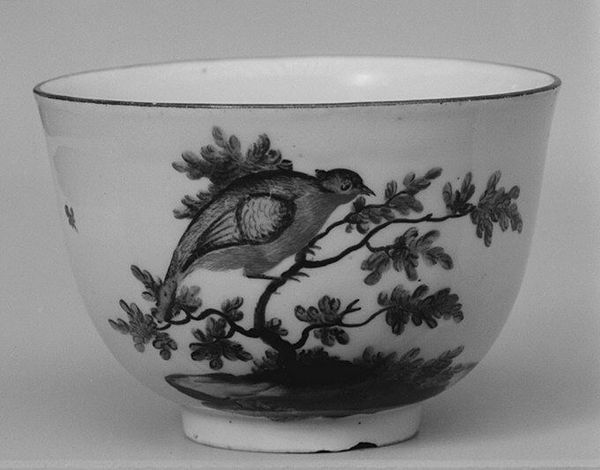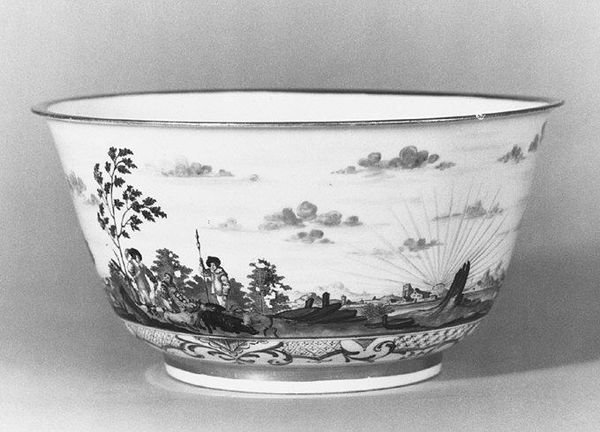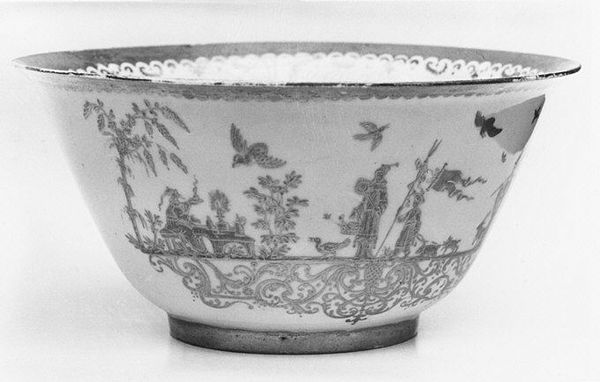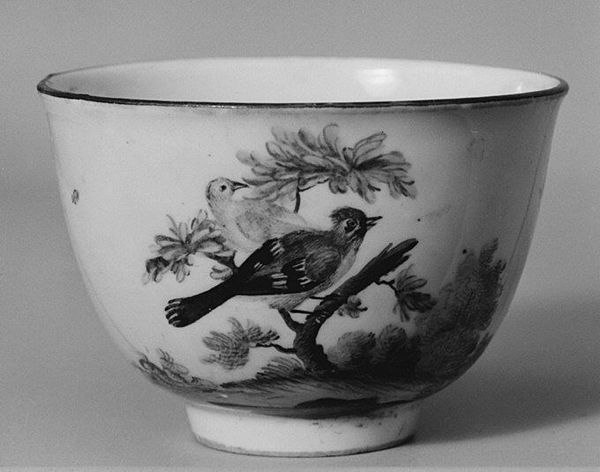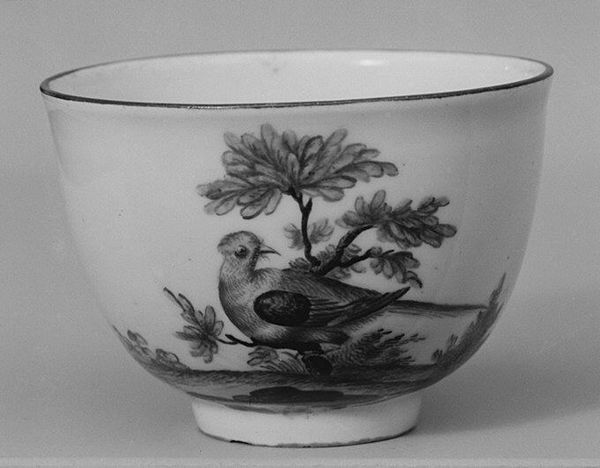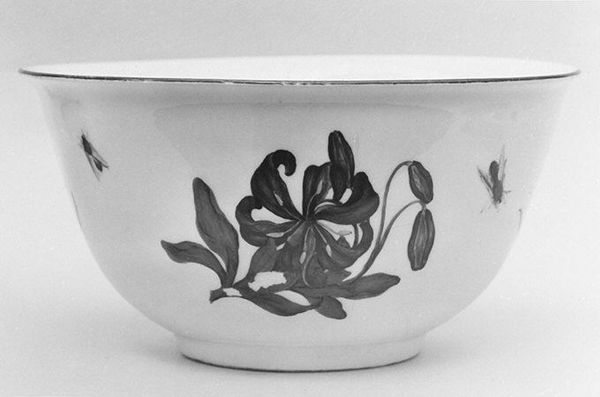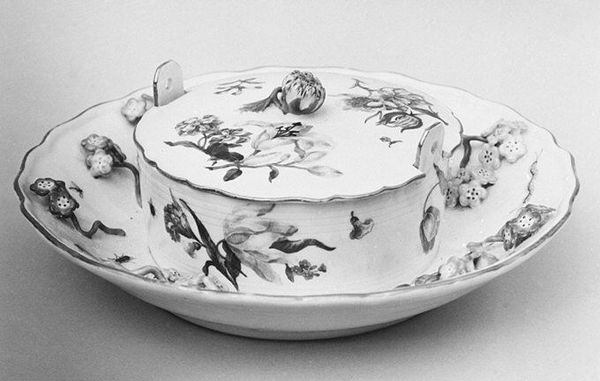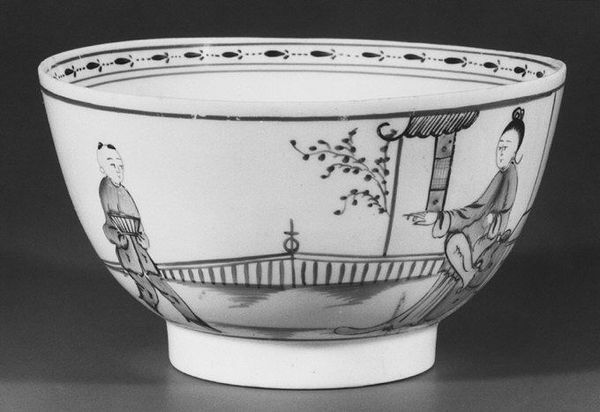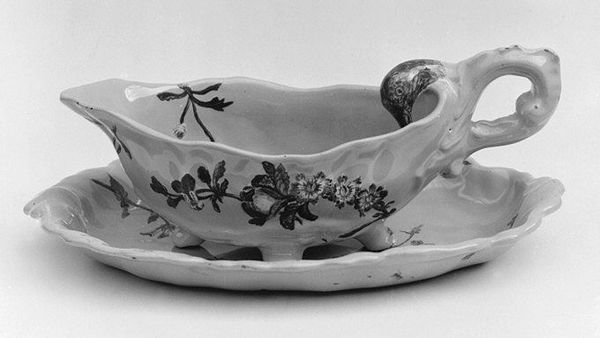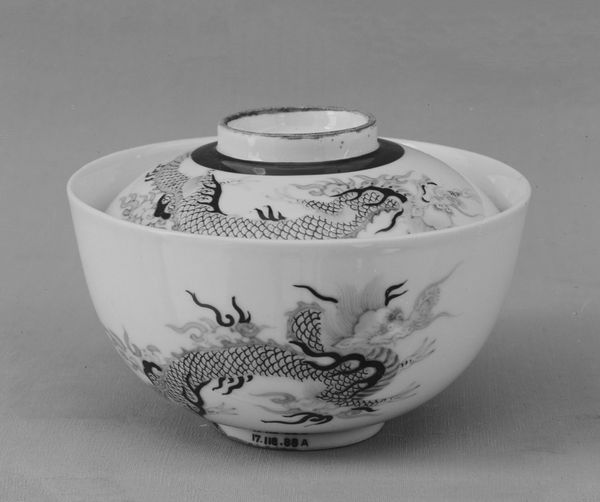
Bowl (part of a service) 1765 - 1775
0:00
0:00
ceramic, porcelain, sculpture
#
animal
#
ceramic
#
porcelain
#
figuration
#
sculpture
#
decorative-art
#
rococo
Dimensions: 3 5/8 × 6 1/2 in. (9.2 × 16.5 cm)
Copyright: Public Domain
Editor: Standing before this "Bowl (part of a service)" made between 1765 and 1775 by the Frankenthal Porcelain Manufactory, I’m struck by how the delicate porcelain and monochrome design contrasts with the rather dynamic depiction of the birds. What can you tell me about it? Curator: Let's consider the materials. Porcelain, during this period, wasn't just a substance; it signified status and global trade networks. Frankenthal, like other European manufacturers, was trying to replicate the highly-prized Chinese porcelain. How does the act of imitating a material tradition influence the value of this object? Editor: So, the bowl is more than just a functional object; it's a statement about aspiration and cultural exchange? Curator: Precisely! And the labor involved in creating it is crucial. From the mining of kaolin to the meticulous painting of the bird scene, this bowl represents a complex chain of production and human effort. Are the birds painted directly onto the ceramic or is there a transfer? Does the mechanization alter the art-making process? Editor: Good point, it's amazing to consider that the entire process depended on skilled laborers with their particular skill sets, like painters and handlers. Also, given the social context of Rococo decorative art, was such porcelain mostly for display and for the table use of the elite? Curator: Absolutely! The Rococo style itself speaks to the aristocratic tastes and consumerism of the time. Objects like this bowl weren't merely functional; they were designed to be admired, collected, and displayed as emblems of wealth and refinement. Now, consider how such display influences artistic labor within factories. Editor: So, looking at it from this perspective, I appreciate how it encompasses trade, labor, and societal values beyond its elegant form. It makes you appreciate the actual labour! Curator: Exactly. It reminds us that objects are rarely just beautiful; they’re also embodiments of social and economic relations.
Comments
No comments
Be the first to comment and join the conversation on the ultimate creative platform.
